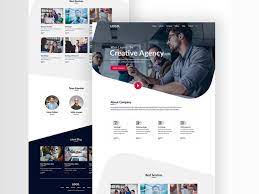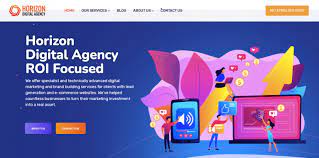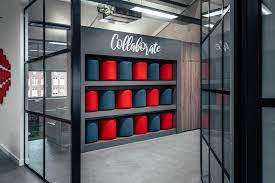The Role of a Design Agency in Transforming Businesses
In today’s competitive business landscape, the importance of design cannot be overstated. A well-crafted visual identity can make a significant difference in how a brand is perceived by its target audience. This is where design agencies play a crucial role in helping businesses stand out and thrive.
A design agency is a creative powerhouse that specialises in crafting visual solutions to meet the unique needs of their clients. From logo creation and branding to website design and marketing collateral, these agencies are equipped with the expertise and skills to elevate a brand’s presence across various platforms.
One of the key advantages of working with a design agency is their ability to bring fresh perspectives and innovative ideas to the table. By collaborating with experienced designers and creatives, businesses can benefit from unique and impactful designs that set them apart from competitors.
Design agencies also play a vital role in ensuring consistency across all brand touchpoints. By developing cohesive visual elements that resonate with the brand’s values and messaging, they help create a strong and memorable brand identity that resonates with customers.
Moreover, design agencies are adept at staying up-to-date with the latest design trends and technologies. This enables them to deliver cutting-edge solutions that not only look visually appealing but also function seamlessly across different platforms.
Ultimately, partnering with a design agency can be a game-changer for businesses looking to enhance their brand image, attract new customers, and drive growth. By leveraging the expertise of skilled designers and creatives, businesses can unlock new opportunities for success in an increasingly competitive market.
Seven Advantages of Partnering with a Design Agency for Exceptional Brand Development
- Professional expertise in visual design
- Fresh and innovative perspectives on branding
- Ability to create cohesive brand identities
- Access to the latest design trends and technologies
- Customised solutions tailored to client needs
- Enhanced brand recognition and customer engagement
- Opportunity to stand out in a competitive market
Challenges of Engaging a Design Agency: Cost, Communication, Creativity, and Internal Growth
- Costly services may not be feasible for small businesses with limited budgets.
- Miscommunication or differing creative visions between the client and the design agency can lead to delays and dissatisfaction.
- Some design agencies may have a fixed style or approach, limiting the diversity of design options available to clients.
- Relying solely on a design agency for all visual aspects may hinder internal creative growth within the business.
Professional expertise in visual design
Design agencies bring a wealth of professional expertise in visual design to the table, ensuring that businesses receive top-notch creative solutions that resonate with their target audience. With skilled designers at the helm, these agencies have the knowledge and experience to craft visually compelling designs that not only look aesthetically pleasing but also effectively communicate the brand’s message and values. By leveraging their expertise in colour theory, typography, layout design, and visual storytelling, design agencies can create impactful visuals that leave a lasting impression on customers and help businesses differentiate themselves in a crowded marketplace.
Fresh and innovative perspectives on branding
Design agencies bring a unique advantage to businesses by offering fresh and innovative perspectives on branding. By collaborating with experienced designers and creatives, design agencies can inject new ideas and creative solutions that help brands differentiate themselves in the market. This fresh approach to branding can revitalise a brand’s image, attract new audiences, and set them apart from competitors. Design agencies excel at thinking outside the box and creating visually compelling brand identities that resonate with consumers on a deeper level, ultimately driving brand success and growth.
Ability to create cohesive brand identities
Design agencies excel in their ability to create cohesive brand identities for businesses. By carefully crafting visual elements such as logos, colour schemes, typography, and marketing materials, design agencies ensure that every aspect of a brand’s identity aligns seamlessly with its core values and messaging. This consistency across all brand touchpoints helps establish a strong and memorable brand presence that resonates with customers, builds trust, and sets businesses apart from their competitors.
Access to the latest design trends and technologies
Design agencies offer businesses access to the latest design trends and technologies, providing them with a competitive edge in the ever-evolving digital landscape. By staying abreast of current design innovations, these agencies can create visually compelling and cutting-edge solutions that resonate with modern audiences. This proactive approach ensures that businesses can leverage the most up-to-date design techniques to enhance their brand image and stay ahead of the curve in an increasingly dynamic market.
Customised solutions tailored to client needs
Design agencies offer a valuable pro in providing customised solutions tailored to the specific needs of their clients. By taking the time to understand the unique requirements, preferences, and objectives of each client, design agencies can create bespoke designs that not only meet but exceed expectations. This personalised approach ensures that the final deliverables perfectly align with the client’s brand identity, vision, and goals, ultimately leading to more effective and impactful outcomes.
Enhanced brand recognition and customer engagement
By working with a design agency, businesses can achieve enhanced brand recognition and customer engagement. Design agencies have the expertise to create visually appealing and cohesive brand identities that resonate with target audiences. Through strategic design elements across various platforms, businesses can establish a strong brand presence that stands out in the market. This not only helps in increasing brand recognition but also fosters deeper connections with customers, leading to improved engagement and loyalty.
Opportunity to stand out in a competitive market
In a fiercely competitive market, one significant advantage of partnering with a design agency is the opportunity to stand out from the crowd. Design agencies bring a fresh perspective and innovative approach to crafting visual solutions that help businesses differentiate themselves and capture the attention of their target audience. By leveraging the expertise of skilled designers, businesses can create unique and impactful designs that set them apart from competitors, ultimately giving them a competitive edge and increasing their visibility in the market.
Costly services may not be feasible for small businesses with limited budgets.
For small businesses with limited budgets, the cost of services provided by design agencies can be a significant barrier to accessing professional design expertise. The high fees charged by design agencies may not always align with the financial constraints of small businesses, making it challenging for them to invest in quality design services. This limitation can potentially hinder small businesses from enhancing their brand image and competing effectively in the market, highlighting the need for more affordable design solutions tailored to the budgetary constraints of smaller enterprises.
Miscommunication or differing creative visions between the client and the design agency can lead to delays and dissatisfaction.
Miscommunication or differing creative visions between the client and the design agency can present a significant challenge in the design process. When expectations are not aligned, it can result in delays, misunderstandings, and ultimately dissatisfaction with the final outcome. Clear and effective communication is essential to ensure that both parties are on the same page regarding project goals, design preferences, and desired outcomes. Without a shared vision and open dialogue, the collaborative process between the client and the design agency may become hindered, impacting the quality and timeliness of deliverables. It is crucial for both sides to actively engage in transparent communication to mitigate potential issues and ensure a successful partnership that yields satisfactory results.
Some design agencies may have a fixed style or approach, limiting the diversity of design options available to clients.
While design agencies can offer valuable expertise and creativity, a potential drawback is that some agencies may have a fixed style or approach. This limitation can restrict the diversity of design options available to clients, potentially hindering the ability to explore different creative directions that may better align with their brand identity or target audience. Clients may find themselves constrained by the agency’s signature style, leading to a lack of flexibility and innovation in the design process. It is important for businesses to carefully consider this aspect when selecting a design agency to ensure their vision and requirements are fully met.
Relying solely on a design agency for all visual aspects may hinder internal creative growth within the business.
When a business relies solely on a design agency for all its visual aspects, it may inadvertently hinder internal creative growth within the organisation. By outsourcing all design work to an external agency, the business may miss out on the opportunity to nurture and develop its in-house creative talent. This over-reliance can lead to a lack of ownership and understanding of the brand’s visual identity among internal team members, potentially stifling their creativity and limiting their ability to contribute innovative ideas. Building an internal creative capacity alongside working with a design agency can strike a balance that fosters both external expertise and internal creative growth for long-term success.




